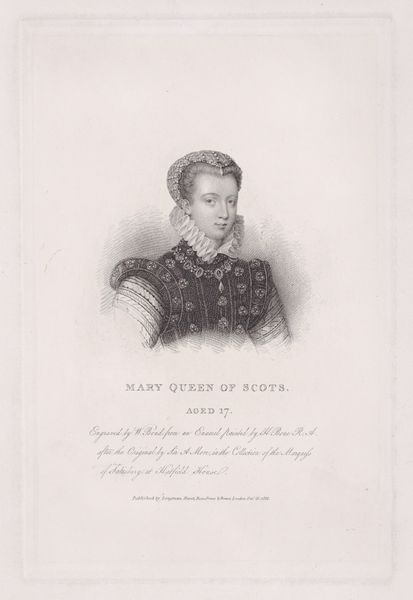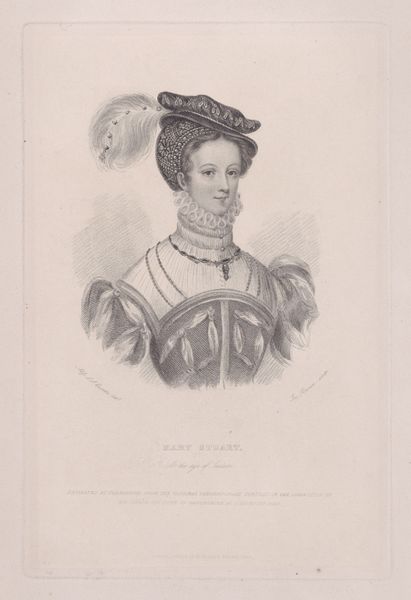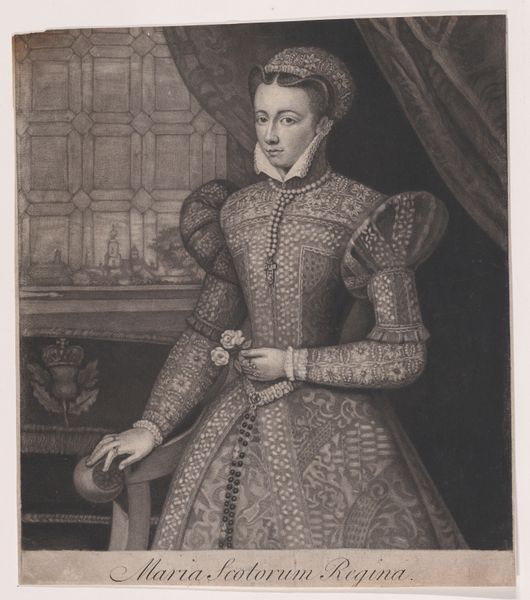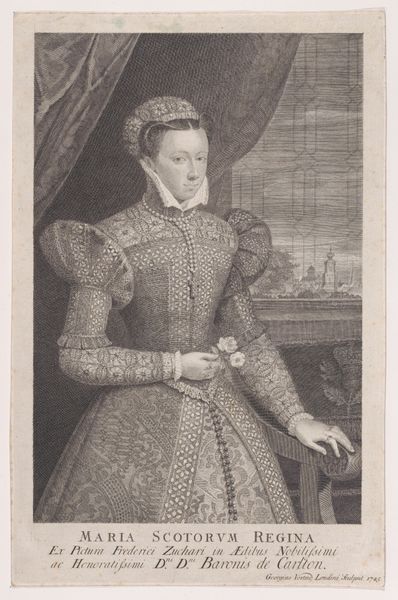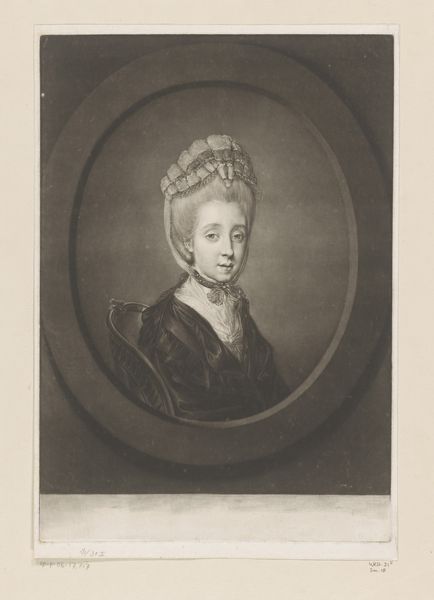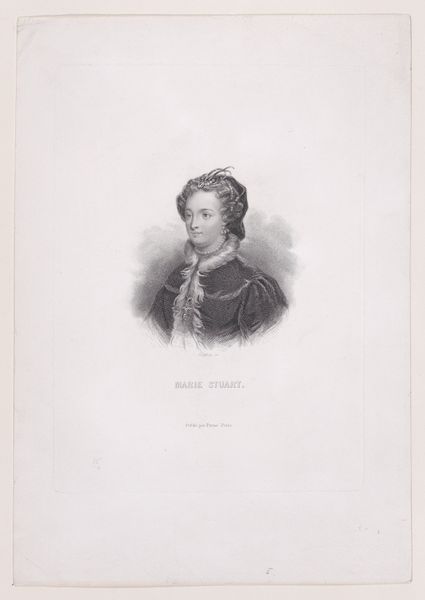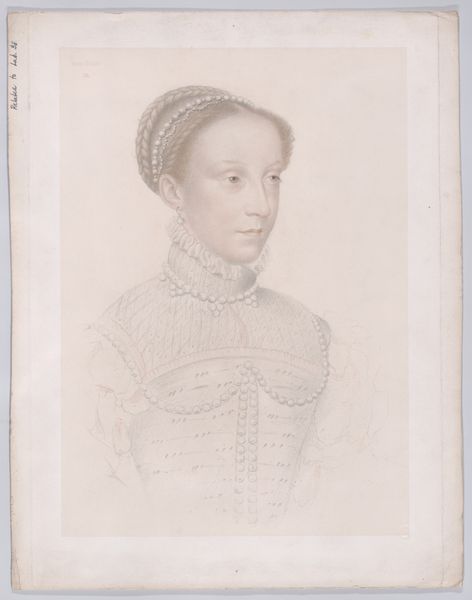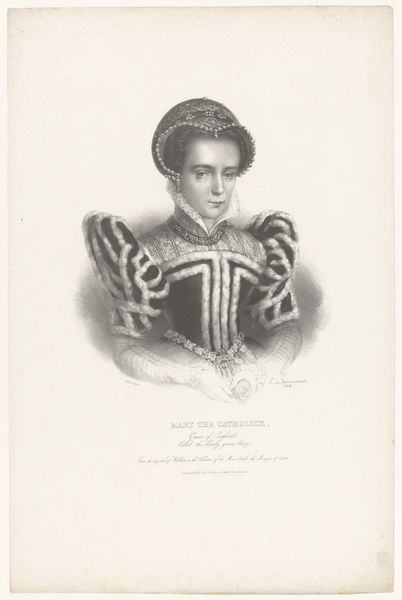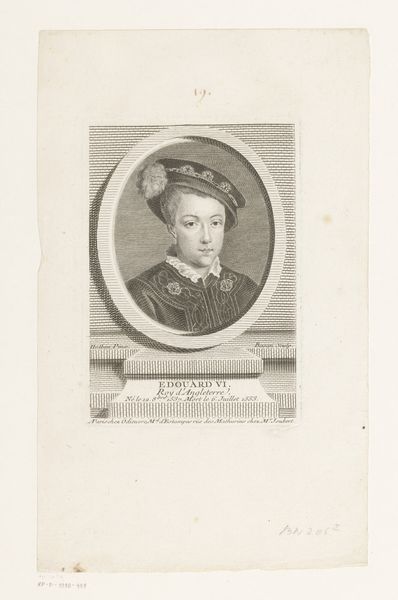
drawing, print, engraving
#
portrait
#
drawing
#
baroque
# print
#
portrait drawing
#
history-painting
#
engraving
Dimensions: Plate: 9 3/4 × 7 in. (24.7 × 17.8 cm) Sheet: 13 7/16 × 11 5/16 in. (34.2 × 28.8 cm)
Copyright: Public Domain
Editor: This is "Mary, Queen of Scots" by George Vertue, dating roughly from 1700 to 1735. It's a Baroque-style engraving. The intricate detailing on her dress really strikes me. What can you tell me about how portraits like this functioned in that era? Curator: That’s a perceptive observation. Prints like this weren't just decorative. Consider the social context: this was an era of rapidly expanding print culture, where engravings served as a primary means of disseminating imagery and shaping public perception. Reproducing portraits of historical figures like Mary Queen of Scots helped to solidify her place in collective memory. Notice the strategic composition; the oval frame gives the impression of an antique cameo, adding legitimacy. Do you think this representation is a neutral one? Editor: Well, she's holding roses, which seem symbolic, perhaps romanticizing her legacy? Curator: Exactly. Images are never neutral. Consider the socio-political dynamics: the figure of Mary Queen of Scots had potent political symbolism in the 18th century, especially in relation to Jacobite sympathies. Reproducing and circulating her image could be a subtle form of political alignment, or simply playing into a commercial demand fueled by public fascination. What effect do you think repeated distribution of such imagery might have had? Editor: It seems like the act of reproduction itself creates another layer of meaning, turning a historical figure into an icon accessible to a wider audience. It is less about truth, and more about myth-making. Curator: Precisely! It prompts us to question who controlled these narratives, what agendas they served, and how museums today participate in shaping these very narratives when displaying such pieces. I appreciate you picking up on that subtlety. Editor: It's fascinating to consider this portrait not just as a likeness but as a form of historical and political communication, something museums continue today! Curator: Yes. It’s a reminder of the layered context and historical forces at play. These pieces engage directly with our ongoing political dialogues around historical representation and cultural impact.
Comments
No comments
Be the first to comment and join the conversation on the ultimate creative platform.
